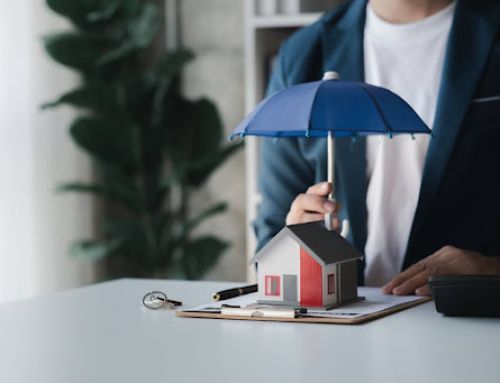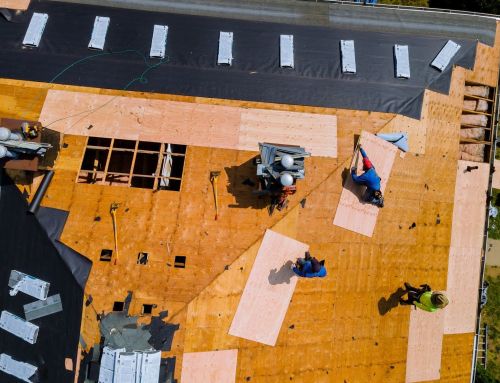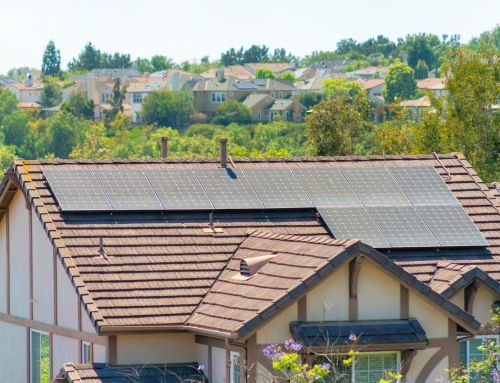Living in Central Florida means enjoying year-round sunshine, but it also means your roof will face some of the most challenging weather conditions in the country. From intense UV rays to hurricane-force winds and torrential rains, Florida’s climate can significantly impact your roof’s lifespan. Understanding when to replace your roof is crucial for protecting your home and avoiding costly emergency repairs.
Understanding Roof Lifespan in Central Florida
The lifespan of your roof depends largely on the materials used and the weather conditions in your region. In Central Florida’s subtropical climate, roofs often require replacement sooner than in other parts of the country due to the intense heat, high humidity, and frequent severe weather events.
Central Florida’s unique location exposes roofs to a combination of harsh elements. With more than 230 sunny days per year and UV index levels that regularly reach “very high” to “extreme,” roofing materials break down much faster under constant solar exposure. On top of that, the area’s proximity to both the Atlantic Ocean and Gulf of Mexico places it directly in the path of tropical storms, averaging one to two direct hurricane impacts per decade.
To address these challenges, the Florida Building Code enforces strict wind resistance requirements. In much of Central Florida, roofs must comply with High Velocity Hurricane Zone (HVHZ) standards, which demand advanced installation methods and materials capable of withstanding wind speeds of 150 mph or more.
For homeowners, this makes residential roof replacement a critical investment in long-term safety and protection. Choosing durable roofing materials and working with qualified contractors ensures your home meets Florida’s building codes while maximizing resistance to extreme weather. A properly installed replacement roof not only improves energy efficiency and curb appeal but also provides peace of mind knowing your home is protected against the state’s toughest climate conditions.
Common Roofing Materials and Their Expected Lifespans
Asphalt Shingles: 15-20 years in Central Florida (compared to 20-30 years in milder climates)
- Most affordable option but requires more frequent replacement
- Vulnerable to heat damage and granule loss from UV exposure
- Hurricane winds can easily lift and damage asphalt shingles
- 3-tab shingles typically last 12-15 years, while architectural shingles can reach 18-22 years
- Impact-resistant shingles (Class 4) may qualify for insurance discounts and last 2-3 years longer
Metal Roofing: 40-70 years
- Excellent choice for Florida’s climate with superior wind resistance (up to 140+ mph)
- Reflects heat, reducing cooling costs by 10-25%
- Highly resistant to wind and impact damage
- Standing seam metal roofs offer the longest lifespan and best weather protection
- Galvalume and aluminum are preferred materials for coastal areas due to corrosion resistance
Tile Roofing (Clay or Concrete): 50-100 years
- Popular choice in Florida due to durability and aesthetic appeal
- Excellent wind resistance when properly installed with hurricane clips
- Can withstand intense UV exposure without significant degradation
- Concrete tiles are more affordable but heavier than clay
- Requires stronger structural support due to weight (8-10 lbs per square foot)
Slate Roofing: 75-100+ years
- Premium option with exceptional longevity
- Naturally resistant to Florida’s weather conditions
- Higher upfront cost but excellent long-term value
- Requires specialized installation and skilled craftsmen
- May require structural reinforcement due to weight
Synthetic/Composite Materials: 25-40 years
- Engineered to mimic traditional materials while offering enhanced durability
- Often include UV inhibitors and impact resistance
- Lighter weight than natural materials
- Relatively new to market, so long-term performance data is limited
Signs You Need a New Roof in Orlando and Central Florida
Recognizing the warning signs early can help you avoid emergency roof replacement and potential water damage to your home’s interior.
Exterior Warning Signs
Missing or Damaged Shingles After Florida’s frequent storms, inspect your roof for missing, cracked, or curling shingles. Even a few missing shingles can lead to water infiltration and extensive damage.
Granule Loss Check your gutters for excessive granule accumulation. In Florida’s intense sun, asphalt shingles lose granules more rapidly, indicating the need for replacement.
Sagging or Uneven Roof Lines A sagging roof indicates structural damage, often caused by water infiltration or the weight of multiple roof layers—a serious safety concern requiring immediate attention.
Damaged Flashing Flashing around chimneys, vents, and roof valleys is particularly vulnerable to Florida’s weather. Damaged flashing is a common entry point for water during heavy rains.
Interior Warning Signs
Water Stains on Ceilings or Walls Brown or yellow stains indicate water penetration, which can lead to mold growth in Florida’s humid climate. Even small stains can indicate significant underlying damage, as water often travels along beams before becoming visible.
Daylight Through Roof Boards If you can see daylight through your roof boards from the attic, your roof has significant gaps that need immediate attention. This is particularly concerning during Florida’s rainy season when sudden downpours can dump several inches of rain in a short period.
Higher Energy Bills A deteriorating roof loses its insulating properties, forcing your air conditioning system to work harder during Florida’s hot summers. In Central Florida, where cooling costs can account for 60-70% of summer energy bills, even a 10% increase in energy usage can signal roof problems.
Musty Odors Persistent musty smells, especially in upper floors or attics, often indicate moisture infiltration and potential mold growth—a serious health concern in Florida’s humid environment.
Pest Intrusion Gaps in roofing materials can allow insects, rodents, and even birds to enter your home. This is particularly problematic in Florida where carpenter ants and termites can cause additional structural damage.
Florida-Specific Factors That Affect Roof Replacement Timing
Hurricane and Storm Damage
Central Florida experiences frequent severe weather events that can dramatically shorten a roof’s lifespan. Even if your roof appears intact after a storm, underlying damage may accelerate deterioration. The region sits in “Hurricane Alley,” with the peak season running from June through November. Wind speeds during hurricanes can exceed 150 mph, creating uplift pressures that can compromise even properly installed roofing systems.
Hail damage is another significant concern, particularly during spring and summer months when severe thunderstorms are common. Hail can cause immediate visible damage to shingles, or create micro-fractures that lead to premature failure months or years later.
Intense UV Radiation
Florida’s year-round sunshine means constant UV exposure that breaks down roofing materials faster than in other climates. The UV index in Central Florida regularly reaches levels of 10+ during summer months, classified as “very high” to “extreme.” This constant bombardment causes:
- Thermal shock from rapid heating and cooling cycles
- Chemical breakdown of asphalt and synthetic materials
- Premature aging and brittleness in roofing components
- Accelerated granule loss in asphalt shingles
High Humidity and Heat
The combination of high humidity (often 80-90% during summer months) and temperatures regularly exceeding 90°F creates ideal conditions for:
- Mold and algae growth on roof surfaces
- Accelerated corrosion of metal components
- Expansion and contraction stress on materials
- Reduced effectiveness of adhesives and sealants
Frequent Temperature Fluctuations
While Florida is known for its warm climate, temperature variations between day and night, and seasonal changes, cause roofing materials to expand and contract. Daily temperature swings of 20-30°F are common, and the difference between summer highs (95°F+) and winter lows (30-40°F) creates significant stress on roofing materials.
Salt Air Corrosion
Properties within 10-15 miles of the coast face additional challenges from salt-laden air, which accelerates corrosion of metal components including:
- Nails and fasteners
- Flashing and trim
- Gutters and downspouts
- Metal roofing materials
Severe Weather Patterns
Central Florida’s unique weather patterns include:
- Afternoon thunderstorms with high winds and heavy rain
- Microbursts that can produce winds exceeding 100 mph
- Tornado activity, particularly during spring months
- Extended periods of high heat and humidity
How Often to Replace Your Roof in Florida
Based on Central Florida’s climate conditions, here are general replacement timelines:
- Asphalt Shingles: Every 15-20 years
- Metal Roofing: Every 40-50 years (with proper maintenance)
- Tile Roofing: Every 50-75 years
- Slate: 75+ years
However, these timelines can be shortened by:
- Hurricane or storm damage
- Poor installation quality
- Inadequate ventilation
- Lack of regular maintenance
Maintenance Tips to Extend Your Roof’s Lifespan
Regular Inspections
Schedule professional roof inspections at least twice yearly—before and after hurricane season. Look for loose or damaged shingles, clogged gutters, and signs of wear around roof penetrations.
Prompt Repairs
Address minor issues immediately before they become major problems. In Florida’s climate, small problems can quickly escalate due to frequent rain and storms.
Proper Ventilation
Ensure your attic has adequate ventilation to prevent heat and moisture buildup, which can significantly reduce your roof’s lifespan.
Gutter Maintenance
Keep gutters clean and functioning properly to prevent water backup that can damage roof edges and fascia boards.
When to Call a Professional
Don’t wait for obvious signs of failure. Contact a roofing professional if you notice:
- Your roof is approaching its expected lifespan
- You’ve experienced recent storm damage
- Energy bills are increasing without explanation
- You’re planning to sell your home
Planning Your Roof Replacement
Best Time for Replacement
In Central Florida, the ideal time for roof replacement is during the dry season (typically November through April) when weather conditions are more predictable and contractors are more readily available. However, emergency replacements may be necessary year-round.
Dry Season Advantages:
- Lower humidity levels aid in material installation
- Reduced risk of weather delays
- Better working conditions for installers
- More contractor availability and competitive pricing
Wet Season Considerations:
- Higher risk of rain delays
- Increased material costs due to demand
- Limited contractor availability
- Potential for emergency situations requiring immediate attention
Getting Multiple Quotes
Always obtain quotes from at least three licensed, insured roofing contractors. Look for contractors familiar with Florida’s building codes and hurricane requirements. When comparing quotes, consider:
- Material quality and manufacturer warranties
- Installation methods and wind rating compliance
- Contractor licensing and insurance coverage
- Project timeline and weather contingencies
- Permits and inspection coordination
Insurance Considerations
Many Florida homeowners can receive insurance assistance for roof replacement, especially if damage is storm-related. Document any damage with photos and contact your insurance company promptly. Important insurance factors include:
- Understanding your policy’s coverage limits and deductibles
- Timing requirements for filing claims
- Requirement for licensed contractor estimates
- Potential for replacement cost vs. actual cash value coverage
Financing Options
Roof replacement is a significant investment. Common financing options include:
- Home equity loans or lines of credit
- Personal loans with competitive rates
- Contractor financing programs
- Insurance claim proceeds
- Property tax financing programs (where available)
Permits and Inspections
Florida requires permits for most roof replacements. Your contractor should handle:
- Permit application and fees
- Structural engineering requirements (if needed)
- Building code compliance verification
- Coordination with local building inspectors
- Final inspection and approval documentation
Conclusion
In Central Florida’s challenging climate, staying proactive about roof maintenance and replacement is essential for protecting your home and family. While the general rule is to replace asphalt shingle roofs every 15–20 years, regular inspections and prompt attention to warning signs are more important than following a strict timeline.
Remember that investing in a quality roof replacement now can save you thousands in emergency repairs and protect your home’s value. When in doubt, consult with a qualified roofing professional who understands Central Florida’s unique challenges and can provide personalized recommendations for your specific situation.
By staying informed about your roof’s condition and acting proactively, you can ensure your home remains protected against Florida’s unpredictable weather while maintaining its value and your peace of mind.
At Guardian Home, we specialize in residential roof replacement designed for Florida’s demanding climate. Our expert team uses top-quality materials and proven installation techniques to deliver long-lasting protection against heat, storms, and hurricanes. Contact Guardian Home today for a free roof inspection and consultation, and take the first step toward securing your home with a reliable, storm-ready roof.







